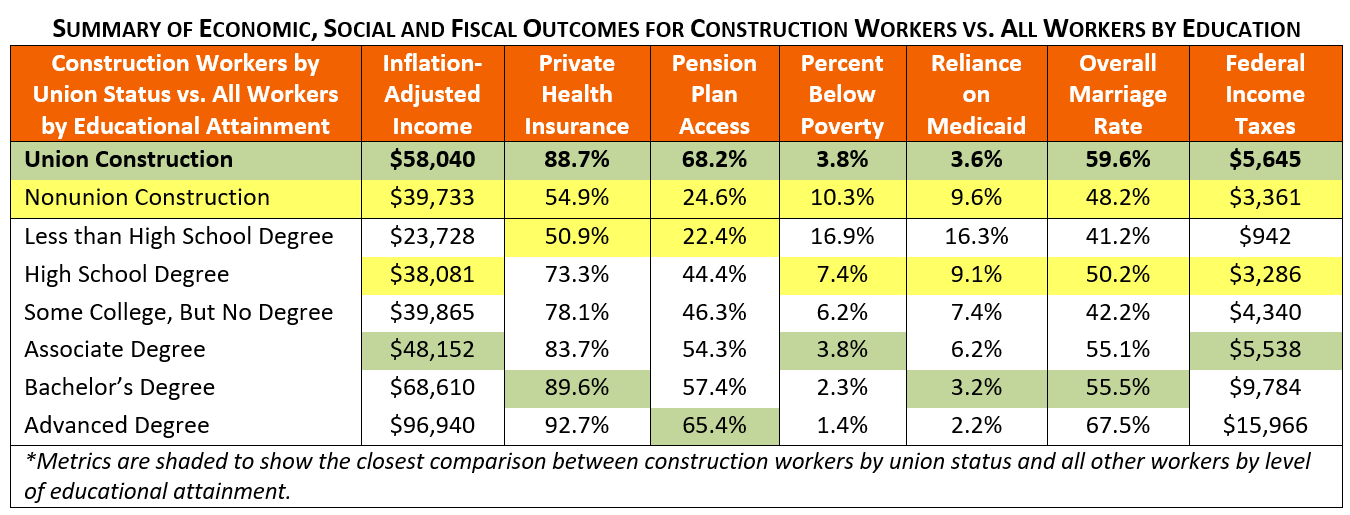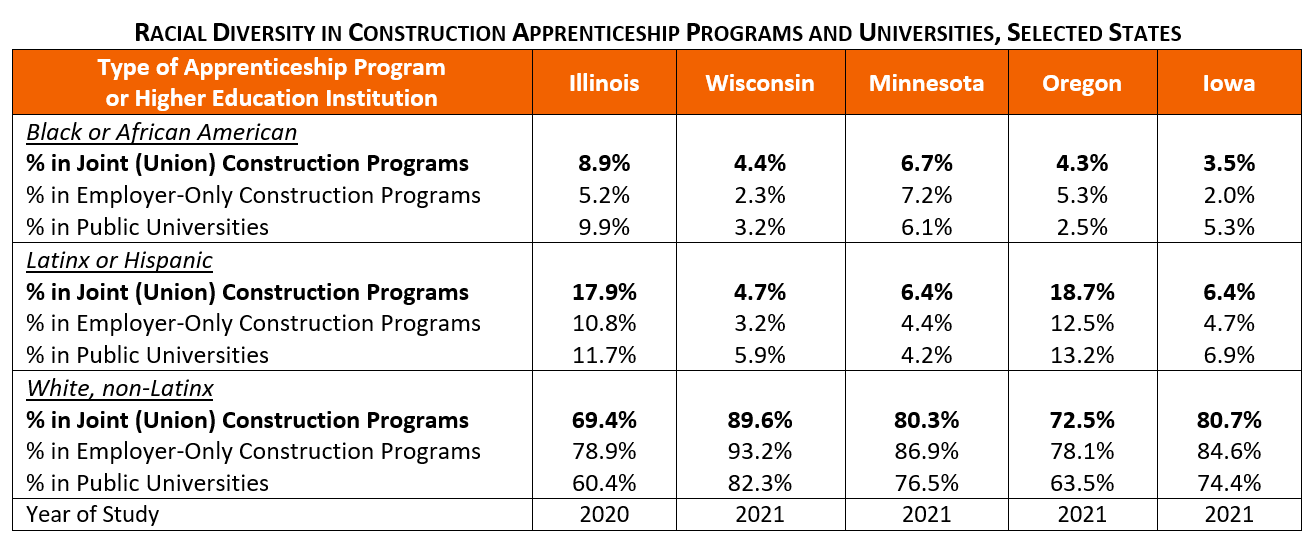La Grange, IL: A new national study by the Illinois Economic Policy Institute (ILEPI) has found that on average, graduates of joint labor-management (union) apprenticeship programs in the construction industry are able to achieve near wage and benefits parity with other types of workers with four-year college degrees.
Q2 2021 hedge fund letters, conferences and more
Read the report, “Union Apprenticeships: The Bachelor’s Degree of the Construction Industry – Data from the United States 2010-2020.”
Union Construction Apprenticeships Deliver A More Robust Training Regimen
The study, which analyzed ten years of data from the Current Population Survey’s Annual Social and Economic Supplement released by the U.S. Department of Labor and U.S. Census Bureau, comes as Congress is considering over $1 trillion dollars in new infrastructure investment that is expected to increase demand for skilled trades workers.
“The data reveals that broad stigmas that have long been associated with vocational training alternatives to college are simply not grounded in fact,” said study ILEPI Policy Director Frank Manzo IV. “Compared with two- and four-year colleges, joint labor-management apprenticeships in construction deliver a more robust training regimen, similar diversity outcomes, competitive wage and benefit levels, and comparable tax revenue for states and local governments, while leaving graduates entirely free of burdensome student loan debt.”
In its examination of core economic, fiscal and social metrics, the study found that graduates of union apprenticeship programs achieve outcomes most similar to other workers with bachelor’s degrees and associate degrees, while outcomes for nonunion construction workers more closely mirrored other workers with high school diplomas or GEDs.
Nonunion Construction Workers' Earnings
Overall, the study found that nonunion construction workers earned an average $18,300 less per year than their unionized counterparts, were significantly less likely to have access to health insurance or a retirement plan at work, were more than twice as likely to be living in poverty, were nearly three times more likely to be reliant on Medicaid, and were significantly less likely to be married—a metric that other research has linked to social stability and upward economic mobility.
“The data unequivocally shows that attending college is not the only pathway into the American middle class,” added Manzo. “However, it is clear that the most viable such pathway in construction runs through the joint labor-management apprenticeships and the unionized side of the industry.”
Prior studies examining construction apprenticeship programs have shown that they also offer a substantially more rigorous training curriculum than either two-year colleges or four-year universities. Recent studies in Iowa, Wisconsin, Illinois and Oregon have concluded that construction apprenticeships offer up to 41% more hours of training than bachelor’s programs at public universities, and up to 183% more than associate degrees at community colleges.
Relative to public universities, this research also found that joint-labor management programs enrolled a higher share of Black or African American trainees in three of the five states studied, and a higher share of Hispanic or Latinx trainees in four of the five states studied.
“By providing more people from more backgrounds with the in-demand skills needed to secure good-paying jobs, the data shows that joint labor-management apprenticeship programs consistently deliver bachelor’s degree-level outcomes,” Manzo concluded. “That’s great news for workers looking for alternatives to college, and an instructive framework for policymakers looking for ways to grow America’s middle class.”






